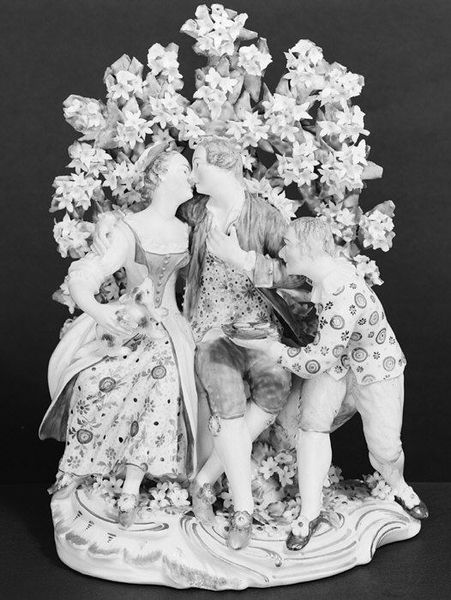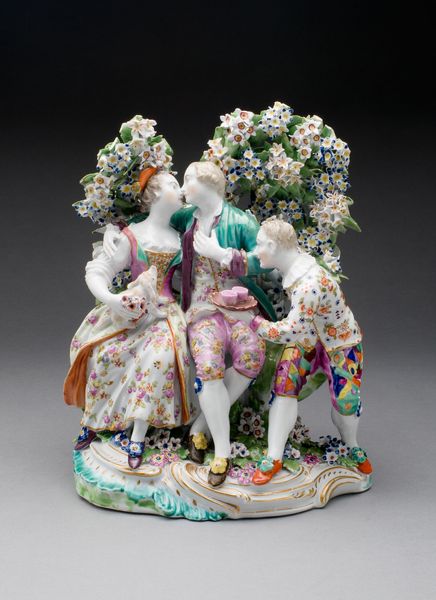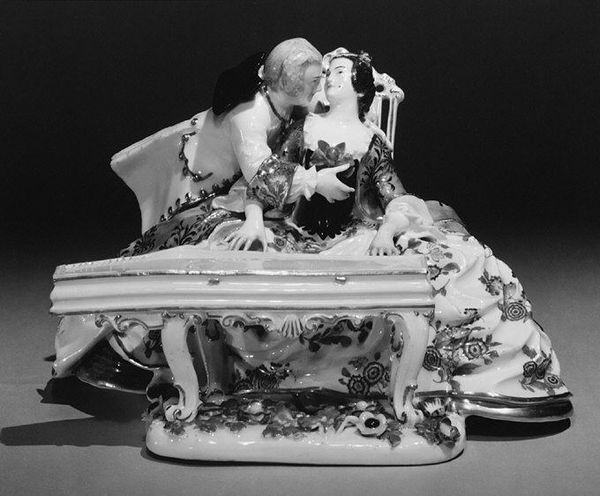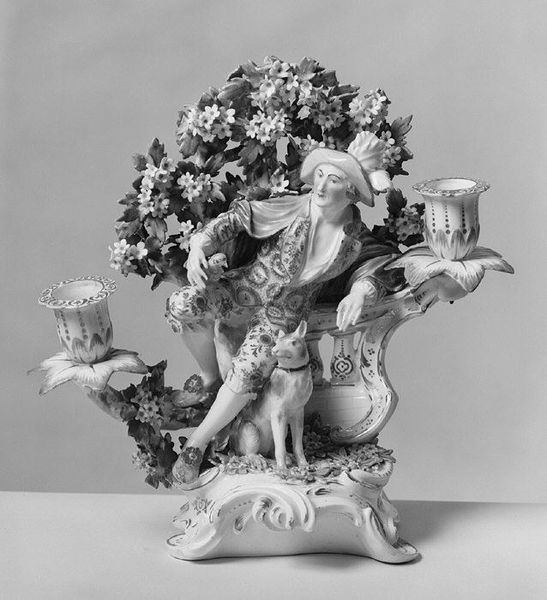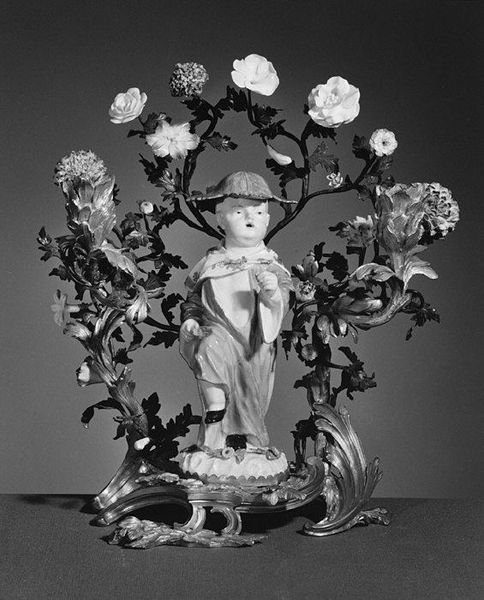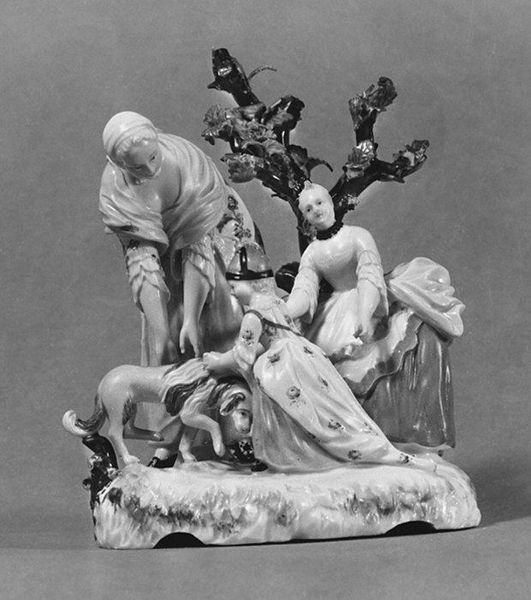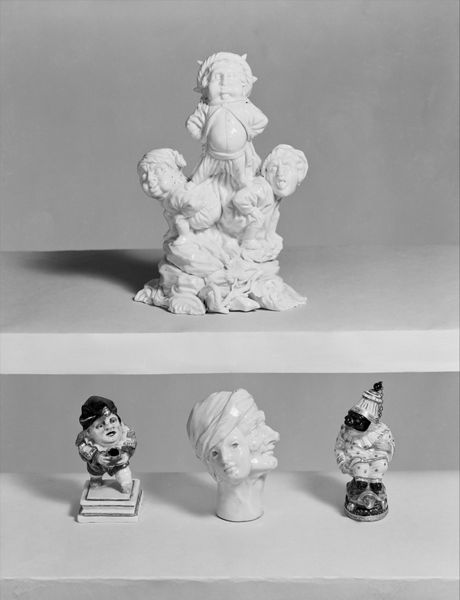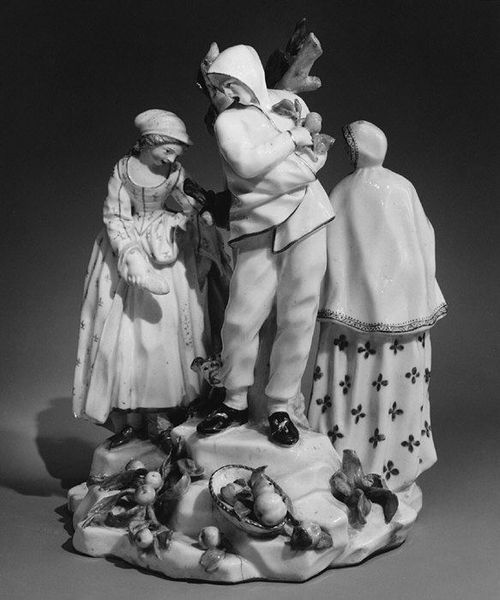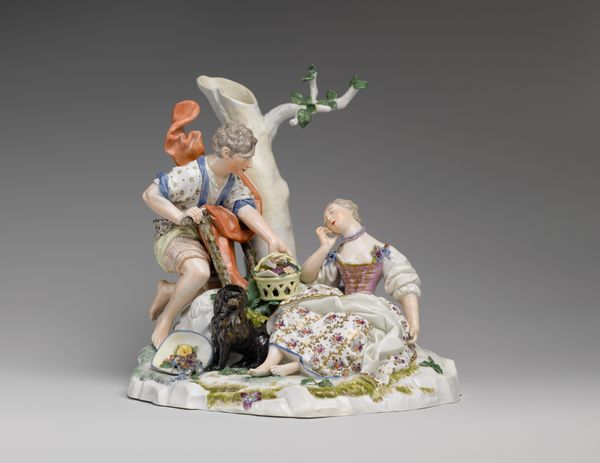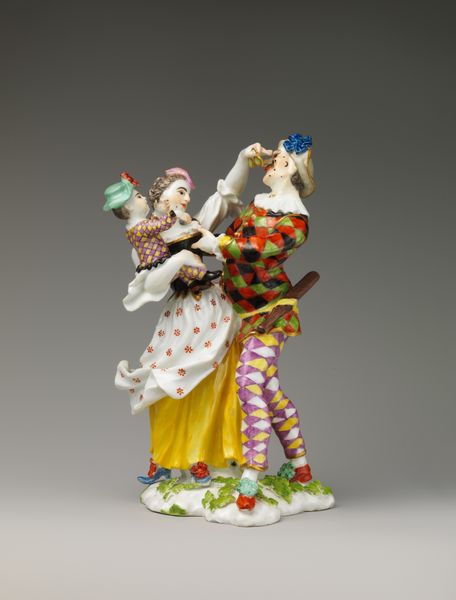
ceramic, porcelain, sculpture
#
fairy-painting
#
sculpture
#
ceramic
#
porcelain
#
figuration
#
sculpture
#
genre-painting
#
decorative-art
#
miniature
#
rococo
#
statue
Dimensions: 7 1/2 x 7 1/2in. (19.1 x 19.1cm)
Copyright: Public Domain
Curator: Well, isn’t that darling? The name of this piece is “Lovers and Clown,” made sometime between 1750 and 1760 by the Derby Porcelain Manufactory. Editor: Darling, indeed. I get an almost…saccharine feeling from it. All that frilly detail, those blushing faces... it's intensely Rococo. The almost too-perfect scene, crafted so meticulously in miniature... Curator: Miniature! Yes! I find myself wanting to just, cradle it, and wonder about all the hands it must have passed through in its lifetime. Its permanence versus our fleetingness…it's all very humbling. Editor: The composition strikes me as cleverly structured. Notice how the figures form a triangular arrangement, stabilized by the tree trunk. The lines are elegant but confined. It speaks to a world obsessed with order, yet hinting at underlying passions—that almost grotesque little clown seems out of place in this “ideal scene," adding tension to an otherwise predictable harmony. Curator: But isn't it like life itself, though? The comedy lurking beneath the beauty? I feel that the artist might've wanted to say love comes with its own brand of theater, complete with its observers. And even in something so "posed", there are the undeniable yearnings and hopes that bind us. It reminds me of… being young, wanting to have grand romances as an adolescent… Editor: That reminds me of Barthes, with his breakdown of images, identifying how objects can represent bourgeois sentimentalism! Each tiny blossom, each delicately rendered expression speaks of very specific cultural codes— the porcelain seems deliberately chosen, because it represents wealth, taste, but it also breaks easy... Curator: Breaks so easy... I suppose it's a good mirror to the human heart then, no? Well, I'm truly happy that the work inspires conversations across time and the spectrum of thoughts! Editor: Agreed, it proves that formalism is never against enjoyment. This piece can teach you both ways, not one!
Comments
No comments
Be the first to comment and join the conversation on the ultimate creative platform.
